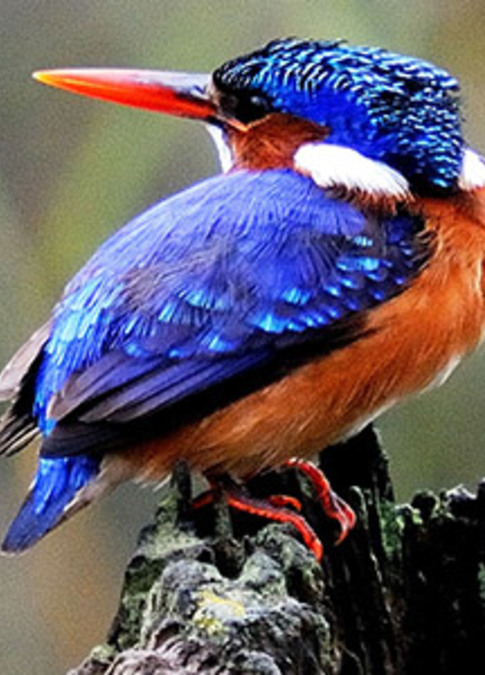The Real Africa
The small group made their way with swinging strides up the path. In the lead was Justine, the Kariega Volunteer Co-ordinator, bright-eyed, brown-skinned and blonde-haired. Following in her footsteps were George and Mary Anne from Bainbridge Island, off Seattle, followed by Lettie, who was also from the USA but from New Hampshire on the other side of the continent, and the “baby” of the group, Aurora, a gap-year student from London. They had spent the morning helping to eradicate invasive aliens, but despite their labours they appeared to be still full of energy. When questioned, George said that he had expected to have to work far harder, while Aurora told us how much she had enjoyed grappling with the pesky Black Wattles.* There remained plenty to do. “There are probably enough to keep us going for the next 45 years,” said Justine, “but each one that is destroyed is a step in the right direction, and it’s very satisfying to see even a small area that is now free of aliens.” Her team beamed in agreement.
These four visitors to Kariega Park had chosen to forego the luxurious accommodation and catering offered to others in favour of a “hands-on” experience of conservation work. They were staying in an old farmhouse on the property. “It’s spotlessly clean, perfectly adequate, and miles better than what we had when bird-watching in Tanzania,” said George. Lettie, perhaps with New Hampshire winters in mind, reckoned that she was nevertheless glad, so far as accommodation was concerned, that it was summertime. She had come across Kariega Park while surfing the web, and this was her first experience of a “volunteer programme”. Aurora had been told by her stepfather that while in Africa she had to visit a game-park and Kariega Park happened to be in the right place at the right time.
The volunteer programme was first started with younger people, such as Aurora, in mind, but Justine told us that an increasing number of older people, mainly from Europe, the USA and South America are choosing to spend up to six weeks on an African volunteer experience. During this time they are involved in a number of everyday tasks, such as the alien-clearing programme, but are also able to experience wildlife in a way denied most other visitors. As Justine noted, “There is the time available to allow the animals to come to us, rather than having to chase around madly trying to see everything possible during a two-day stay.” And volunteers have had some exciting encounters including a territorial display by a bull hippo, which included roars that put up their pulse-rates, elephants strolling past their farmhouse, and daylight lion-hunts.
Depending upon what is happening on the reserve, volunteers also have the opportunity to become involved with data collection and the tracking of collared animals by radio telemetry, the identification of individual elephants, the tracking of elusive leopards, the release of animals – recently that of three Bat-eared Foxes, the only true foxes in Africa - or even, in the cooler, autumn months, with game capture. In addition they visit the nearby rural Farmerfield School where they discover some of the huge problems facing communities in Africa living outside the cities, and of the efforts being made to assist them. “We like to think,” said George, “that in return for the enormous privilege of being able to experience an African environment at close quarters, we are able to make some small contribution towards its sustainability, and towards the people that regard it as home.”
At weekends volunteers often head for the nearby beaches, have a “braai” rather than a barbecue, or experience the cultural delights of conveniently handy Grahamstown, where they become acquainted with other South Africans. Lettie told us of her entertaining encounter with an Afrikaans-speaking farmer and a Xhosa-speaking bar-maid and of the stories they all had shared: “Something I’d never imagined possible”.
It was time to move on and we took our leave of the group. Justine, a farmer’s daughter and so by experience and later training bush-wise, but also articulate, erudite and above all an ambassador for conservation and the new South Africa, gathered her brood together before setting off for further adventures in the Eastern Cape bush.
*Black Wattle: Acacia mearnsii – Australian invader originally cultivated (from the 1880s) in Natal for its bark, used in the tanning industry. It is now widespread throughout the Western and Eastern Cape on soils derived from sandstone, shale, granite or dolerite. Found particularly along rivers and streams.








